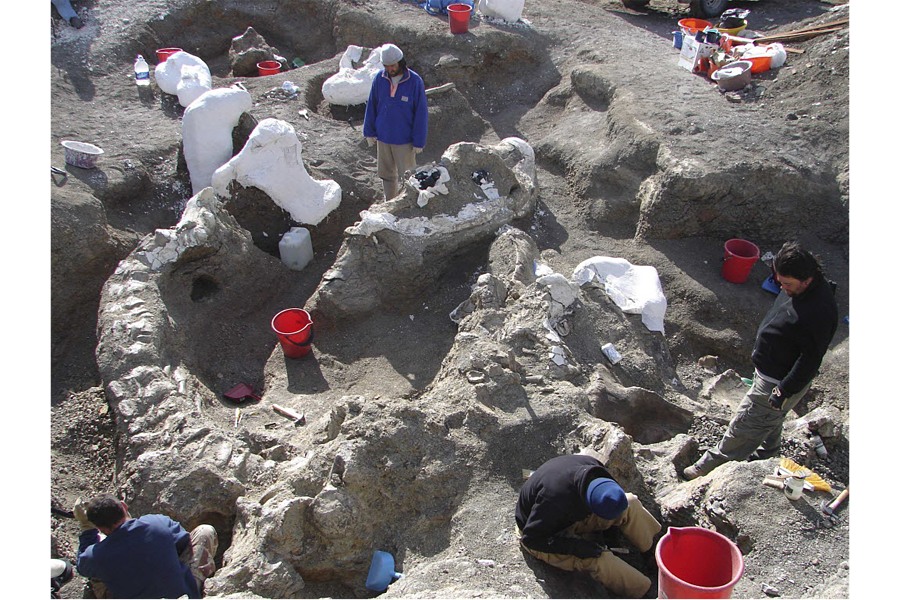New dinosaur skeleton: Was it the biggest ever?
Loading...
| Washington
The word big does not do justice to a massive, long-necked dinosaur that shook the Earth in Argentina about 77 million years ago.
Try colossal, enormous, gargantuan and stupendous - and you might come close to an accurate description of this behemoth, known to scientists as Dreadnoughtus schrani.
Scientists on Thursday announced the discovery in southern Patagonia of remarkably complete and well-preserved fossil remains of the dinosaur, which weighed 65 tons (59,300 kg) and measured 85 feet long (26 meters) with a neck 37 feet long (11.3 meters) and a tail 30 feet long (8.7 meters).
Paleontologist Kenneth Lacovara of Drexel University in Philadelphia, who discovered the dinosaur and led the effort for its excavation and analysis, said the scientists calculated its weight on the basis of the bones in its upper arm and thigh.
Dreadnoughtus weighed more than an adult sperm whale or a herd of African elephants. Tipping the scales at seven times as much as the dinosaur T. rex, it made the North American menace that also lived during the Cretaceous Period look puny.
Dreadnoughtus had "the largest reliably calculable weight" of any known land animal - dinosaur or otherwise, Lacovara said.
Another giant Argentine dinosaur, Argentinosaurus, might have been larger, he said, but its scant remains do not allow a reliable weight estimate. Another group of scientists in May had cited Argentinosaurus, with an estimated weight of 90 tons (82,107 kg), as the largest dinosaur.
While strictly a vegetarian, Dreadnoughtus was no pansy. With its size and a tail that could have clobbered any predator foolish enough to attack it, it probably had nothing to fear from even the largest meat-eating dinosaurs.
Its name reflects that.
"We decided on Dreadnoughtus - meaning 'fearer of nothing' - because when you're as big as this thing was, you're probably not afraid of too much," said one of the researchers, Matt Lamanna of the Carnegie Museum of Natural History in Pittsburgh.
"Not to mention we thought it was time a plant-eating dinosaur got a badass name. Those are usually reserved for the meat-eaters," said Lamanna, a paleontologist.
Lacovara said the name also was a nod to the powerful battleships called dreadnoughts, dating from the turn of the last century, that were designed to be impervious to attack.
Dreadnoughtus probably spent its days munching massive quantities of plants to fuel its enormous body. It was a member of a group of dinosaurs called titanosaurs that are thought to have been the largest dinosaurs that ever lived.
Argentinosaurus also was a titanosaur.
Most titanosaurs are known only from fragmentary remains, but the scientists found 45 percent of the skeleton of Dreadnoughtus, including most of the important bones. Lamanna called it "a treasure trove of information on one of the most successful, but least understood, dinosaur groups of all."
The researchers found two specimens of Dreadnoughtus side by side - one larger than the other, but the scary thought is that they believe the larger one was not even fully grown.
"It appears that both individuals died and were buried rapidly after a river flooded and broke through its natural levee, turning the ground into a soupy mixture of sand, mud and water," Lacovara said.
To attack a healthy adult Dreadnoughtus, a solitary predator "would have to have been suicidal," Lamanna said. "It's conceivable that a pack of these predators could take down a sick or old Dreadnoughtus, but a single carnivore versus a 'Dread' would be a drubbing."
The study appears in the Nature journal Scientific Reports.







